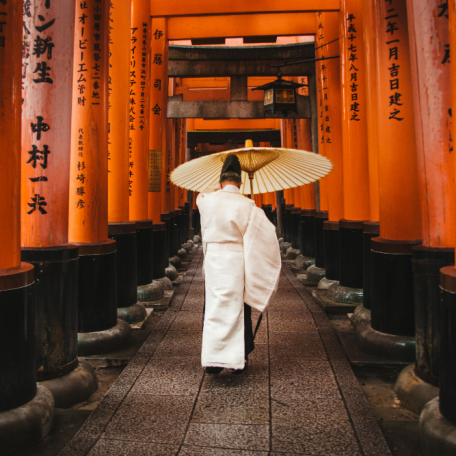White Day in Japan – The day the men give back
Mar 12, 2019
BY Rae DeFrane

Virtually everyone from a Western background is familiar with Valentine’s Day. On February 14th, couples come together in romantic bliss for an obligatory date night and an exchanging of sweet-nothings. In Japan, however, things are a little different. The romance is split-up over two days, rather than both halves of the pair being responsible for the gift-giving at once.
On Valentine’s Day, women either buy or hand-make “giri-choco” (obligatory chocolate given to friends, coworkers and family) and honmei-choco (romance chocolate given to boyfriends, husbands or one’s true love). It is crucial for honmei-choco to be hand-made, as it cannot be seen as true affection if not crafted by your own fingers. Then, exactly one month later, on March fourteenth, the men ‘retaliate’ and make chocolates for the women in their lives. Of course, as with many holidays in Japan (and everywhere!), the Department stores take this opportunity to advertise a plethora of additional gifts and baubles to pair with the sweets for their sweeties.
History
What’s the history of this strange twin to everyone’s favorite Hallmark holiday you might ask? In the 1977, the CEO of a small confectionary company in Fukuoka called Ishimura Manseido was reading a magazine in his office for inspiration to revitalize sales.
Ishimura Zengo read a letter written by a woman who wrote, ‘It’s not really fair that men get chocolate from women on Valentine’s Day but they don’t return the favor. Why don’t they give us something? A handkerchief, candy, even marshmallows…’ Ishimura figured, after reading this woman’s frustration, that if women would be happy with something as small as marshmallows as a gift, surely there was an untapped market to be had.
He ran with the inspiring marshmallow imagery, and invented a sweet created of marshmallow paste with a chocolate center. He then began to survey his female employees as to when they thought would be the best time to receive gifts from their hubbies. They decided on exactly one month after Valentine’s Day, and the following year, in 1978, the idea of “Marshmallow Day” was picked up by a local Department store called Iwataya.
Later, this company suggested a slightly more accessible name for the day (‘marshmallow’ is a little hard to say in Japanese.), but kept the reference to the white confection with “White Day.” By the 1980s, White Day and spread throughout Japanese Department stores and candy-shops as a way for men to show their gratitude.

White chocolates
These days, the chocolates that are most heavily marketed for this holiday are white chocolate (for obvious reasons) and more materialistic gifts wrapped up in crisp white packaging. Bonus points to the guy if the gift is white to mark the occasion or, these days, if the item is deliciously Instagrammable. It is also not as common for Japanese men to hand-make the gifts for their female counterparts.
Instead they have traditionally been expected to spend more money in relation to the importance of the lady in question, whereas women are meant to show their affection through the creative process. Women brave burns from pouring molten chocolate into a mold, and men brave long lines for the best gifts.
Other Asian countries such as Taiwan and South Korea have followed Japan in their observation of White Day, but it remains a distinctly Japanese corporate creation. It is often expected that the gents in the office pitch in for a box of sweets to present to the female coworkers. So especially if you are a male who wishes to work in Japan, when Valentine’s Day sneaks up on you, take that as a reminder that your time will come soon!
Want to enjoy delicious chocolates and Japanese snacks during your trip to Tokyo? Join our Shibuya Retro tour and satisfy your sweet tooth.
Book your pocket wifi now to stay connected through your entire Japan Journey!

Be sure to get the JR Pass to make navigating Japan during your trip that much easier!

YOU MIGHT ALSO LIKE




